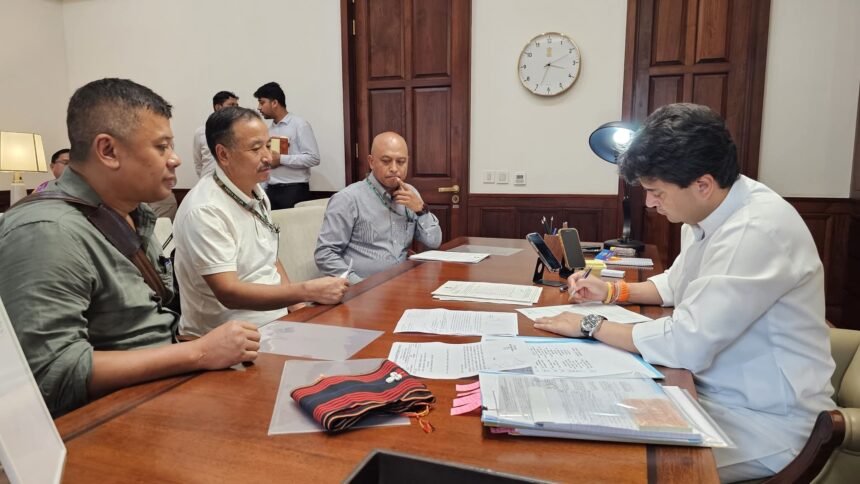28th July 2025 | New Delhi/Kohima In a significant intervention underscoring longstanding regional disparities, Lok Sabha MP and Nagaland Pradesh Congress Committee (NPCC) President S. Supongmeren Jamir has raised concerns over critical infrastructure challenges facing Nagaland and the wider Northeast region. In an appeal to the Union Minister for Development of North Eastern Region (DoNER), M. Jyotiraditya Scindia, Mr. Jamir highlighted several key areas requiring urgent central attention, including the delay in completion of the Dimapur–Kohima four-lane highway, poor mobile connectivity, and the abrupt halt of renewable energy projects.
Dimapur–Kohima Four-Laning Delay: A Lingering Bottleneck
At the heart of Jamir’s appeal lies the protracted delay in the completion of the Dimapur–Kohima four-lane highway, a flagship infrastructure project intended to connect Nagaland’s commercial hub with its capital. Originally sanctioned over a decade ago under the Special Accelerated Road Development Programme for the Northeast (SARDP-NE), the project has consistently missed deadlines, with only one of the three key sections nearing completion.
Despite earlier assurances that the road would be operational by 2021, the final stretch—particularly the treacherous Pagla-Pahar zone—remains plagued by rockfalls, landslides, and serious structural vulnerabilities. Reports indicate that poor contractor performance, financial constraints, and deviation from road safety norms have further hampered progress. As a result, commuters face daily hazards, while trade, transport, and tourism continue to suffer.
Jamir called on the DoNER Ministry and National Highways & Infrastructure Development Corporation Limited (NHIDCL) to expedite the work and ensure strict accountability, citing the severe impact on the local economy and public morale.
Connectivity on Paper, Not in Practice
The MP also brought attention to the persistent problem of mobile connectivity in rural Nagaland, pointing out that while official records claim network coverage in most villages, ground realities reflect otherwise. Several remote and border villages lack reliable service, severely impacting education, healthcare, and emergency response.
Challenging terrain, high tower maintenance costs, frequent power outages, and lack of road access to tower sites have been cited as contributing factors. Jamir stressed that mobile and internet access must be viewed as basic infrastructure, and not a luxury, if the region is to bridge the digital divide with the rest of the country.
Solar Projects Discontinued Without Warning
Another major concern raised by the MP was the sudden discontinuation of off-grid solar energy programs across the Northeast. Previously active schemes like solar street lighting, home lighting systems, and portable power packs had brought light and energy independence to hundreds of remote households. Their abrupt suspension, Jamir said, has left many communities without viable alternatives in areas where conventional electricity grids do not reach.
He urged the central government to revive and expand these schemes, particularly under the Ministry of New and Renewable Energy (MNRE), and ensure region-specific support considering the Northeast’s unique geographic and infrastructural challenges.
A Wake-Up Call for Policy Action
Supongmeren Jamir’s appeal is not just a political statement—it’s a reminder of the developmental gaps that continue to separate the Northeast from mainstream India. While government announcements and flagship initiatives frequently highlight the importance of the region in India’s “Act East” strategy, execution on the ground remains deeply uneven.
“Lip service will not solve our problems,” said Jamir in a public statement. “Nagaland and the Northeast need real investment, transparency, and urgency in development—not just promises in Parliament.”
As the region continues to struggle with inadequate roads, patchy networks, and stalled energy access, the MP’s intervention serves as a clarion call for integrated and time-bound solutions to address the structural neglect of India’s northeastern frontier.





